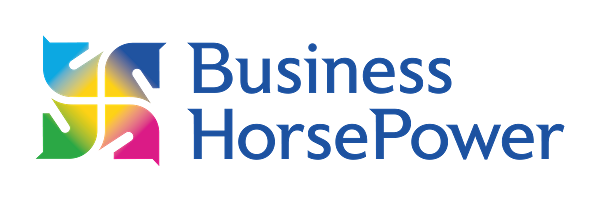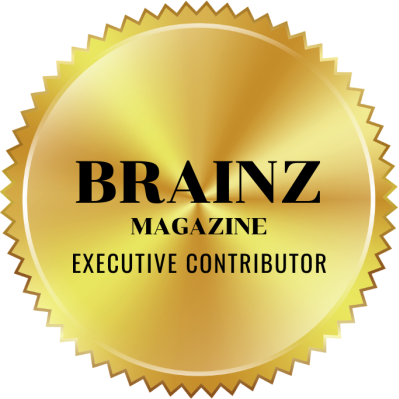
by Julia Felton | Jul 22, 2014
Great athletes put the odds in their favor by having a routine that helps them start each day right. Most top athletes go through a preparation routine before every game, which starts long before they get on the field. The best ones usually start the moment they awake.
I have found that the way you start something sets the tone, pace and rhythm for how you will sustain and finish something. This is true for your day as well.
How you START the day will very much dictate how the rest of your day will go. It will set the tone, pace and momentum of your performance for the day.
How you START the day will very much dictate how the rest of your day will go.
So if you are going to rebuild your life and lifestyle around one of health, vitality and high-performance, then you need to start at the beginning with how you start your day.
Many of us are aware that top athletes follow the pattern of a preparation routine with a fierce devotion because it activates all sorts of subconscious and autonomic systems that puts them “IN THE ZONE.”
“In the zone” describes a condition of readiness and awareness that helps prepare that person for success.
As a business owner and leader, you set the pace for the rest of your organization. Your company, even if it has just a few employees, is a reflection of you. Sharpen your company by first sharpening yourself at the dawn of each day.
Here are my top three tips on you can get your body, mind and spirit into “the zone” first thing in the morning.
1. BODY
Coming out of bed, your body needs three things for certain–water, protein and movement. Your systems were all working through the night and need to complete their cycles. Starting with 16 ounces of water gets you started on the eight glasses you already know you need to get anyway and begins the benefits that moving fluids through your body starts.
You need protein in your first food of the day, even if you are going for a run or a workout. A protein shake will do. The rest of the food pyramid is open, but even if you are a very light breakfast eater, protein is important.
Movement gets the blood moving, clears the mind and releases energy. Workouts with weights or cardio are great–but sometimes ten minutes of stretching is all you have time or space for. Regardless, don’t let the first 30 minutes of the day get started without moving.
2. MIND
Your mind needs focus or you will waste time and energy in your morning and in your day. The most effective business owners and CEOs that I know actually focus on very few things. Those that receive their focus, receive all of their focus.
I recently heard of a billionaire who shared that one of his keys to success is accomplishing only one thing per day. A very big thing, of course, but from the moment he wakes up until he finishes his day, he throws every available effort at that one thing. Most of us measure our days in volume, not in scale. How many things can we check off on our to do list, rather than how important one particular thing might be. Pick the one BIG thing to accomplish and let your morning open up with that as the focus for your first thoughts.
3. SPIRIT
Part of putting yourself in the zone is achieving alignment of your core energy and your positive emotions. A proven way to do this is through a simple reflection of gratitude. Being grateful, aware of all you have, is a centering action. It starts your day with energy and calm. When you greet your employees, clients, and suppliers throughout the day knowing that you included them in your reflections, they will feel that in your interaction and it will make for a better exchange regardless of the circumstances.
So remember, if you want to be a top performers in your field, put the odds in your favor by putting yourself in the zone first. Then you allow others to follow your lead.
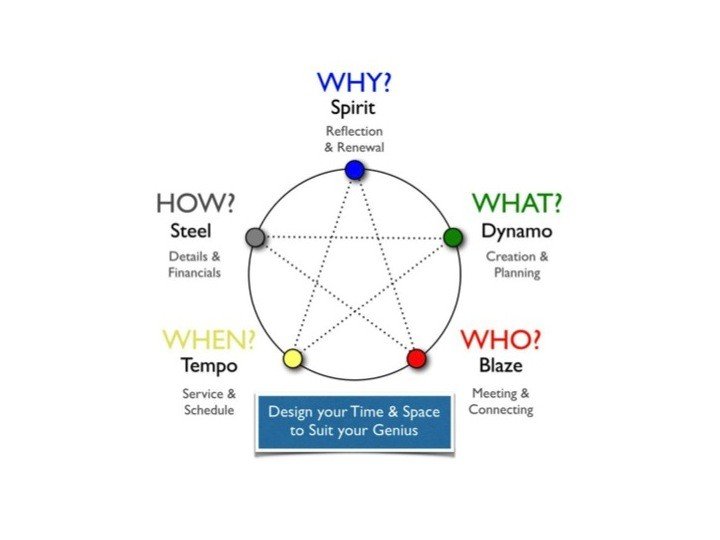
by Julia Felton | Jun 26, 2014
If you want to grow your business and reach the next level of success it is imperative that you create an environment around you that supports this. In my previous blogs I have shared my best tips on how and why decluttering your environment is key to your success. In this blog I will be sharing why it is imperative to create different environments to undertake the different roles that you need to get done in your business.
The big mistake that most business owners make is that they insist of doing all the activities in their business from the same place. You create an office in your home and then conduct all the activities from here. This is a big mistake as it results in us mixing up the different energies of business and this creates stress and overwhelm.
Sitting at a desk to try to study your finances, getting interrupted by phone calls, and then going back to your spreadsheet is like trying to freeze ice and boil water all in the same place. An enormous amount of energy is spent simply trying to switch from one state to another. Of course this is going to cause stress.
The key to cut stress and increase flow is to create a rhythm in your space and time, with five different places linked to your talents.
The ultimate example of this can been seen at Vision Villas in Bali where Roger Hamilton has designed five different pavilions that create five different types of energy. Each of the different energies speaks to each of the different activities of – what, who, when how and why as defined in the Talent Dynamics Pentagram.
Dynamo Space: This is your space to brainstorm, write creatively, come up with new ideas, and answer the question, What? Make it a place where you can pin things up and see the big picture. Don’t take phone calls here or text-message or use any kind of social media. Don’t get stuck in details or distracted by others.
Blaze Space: This is your space to have conversations, answer emails, take phone calls, and answer the question, Who? When you step into this space, you will have everyone’s contact information close at hand, photos of people who are important, and Post-it notes of conversations and threads to follow. Make this a space of conversation, where there is no room to daydream or procrastinate.
Tempo Space: This is your space to be calm and grounded, and to sit with team members to plan or with clients to listen. This is where everything has a When? and Where? This isn’t a place to promote or sell, but a place to provide care and service and take care of smaller people-related activities. Don’t let any overly positive or overly negative energy into this space.
Steel Space: This space allows you to concentrate on the detail, get quiet time, and focus clearly on the How? This is where you keep all your finances and spreadsheets, and where all your detailed files can be easily accessed. Keep out all interruptions, and have no phones, emails, or distractions in this space. Be willing to be critical and to take criticism from here.
Spirit Space: This space inspires you and allows you to reflect on your higher purpose and bigger mission. This is where you get to breathe and bring out your inner smile.
Initially many of you might be thinking Julia there is no way I can carve out all these different spaces at home. I’d invite you to think again. I know a professional speaker who goes to a coffee shop to get inspired and do his creative writing. The energy and the buzz of the coffee shop inspires him. For myself, my spirit space is my hot tub where I can rest and relax in the evening whilst looking at the night sky and become connected to nature. I often find that some of my best creative ideas come when I spend time with my horses – sitting in the field my mind has the opportunity to be free from any constraints and I always find new ideas for my business surface pop up. What environments can you create for yourself that will impact your business success?.
Think about a chef. When they get in the kitchen, they mark out a “Dynamo” Space to “grow” (to keep things fresh), a “Blaze” Space to “glow” (the oven to cook in), a “Tempo” Space to “slow” (the chopping board and blender to separate and connect), a “Steel” Space to “know” (keeping things cool in the fridge and freezer), and the “Spirit” Space to “flow” (the serving space where it all comes together). Then with the ingredients, the recipe and their spaces, preparing the meal is all about right place, right time.
What are the productive environments that you can create to redesign the standards by which you place your mind, body, and spirit each day? What’s the pallet in which you’re creating your masterpiece? Even if you have a full-time job or have your hands full with children, there is always a way to reorganize your time and space to bring out your best self.
Remember there’s an order to everything, and organizing your time and your spaces allows you to move through the seasons with more ease and grace, the way nature meant it to be.
In nature, nothing is rushed, yet all is accomplished.
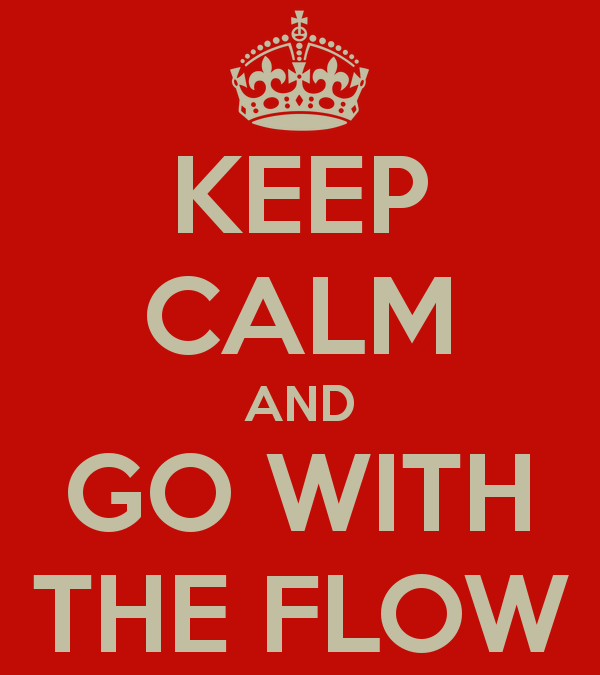
by Julia Felton | Apr 24, 2014
“We can’t solve problems by using the same kind of thinking we used when we created them” – Albert Einstein
When was the last time you experienced true flow? This would have been when you were doing something you loved and time just flew by. You were acting from your strengths and doing something that you were TRUSTed in delivering. How would it be if you had a process to tap into your floe whenever you wanted? Then great, tread on as getting into a flow state does not need to be by accident.
In his book, The Rise of Superman, Steven Kotler, a super-expert on flow describes how elite athletes and extreme sport-people get into flow, and what we can learn from them. Stephen has teamed up with many of the leading action and adventure athletes along with top scientists to decipher what these athletes are doing to harness flow.
What does this mean to you and your business? How can flow improve your results? Steven calls flow “the source code for our intrinsic motivation” and he cites many studies from McKinsey to the US Army, that have found that people who harness their flow state can increase productivity and results by 200% to 500%=.
As the McKinsey Quarterly states: “The opportunity cost….is enormous….Most report that they and their employees are in the zone at work less than 10% of the time. (But) if employees….are five times more productive in flow than they are on average, consider what even a modest 20-percentage-point increase in flow time would yield in the overall workplace productivity- it would almost double”.
Here are the four stages that Steven explains that we go through in order to get into flow:
Stage One – STRUGGLE
The first stage of the four stage flow cycle seems like the opposite of flow. This is when you’re working hard, pushing to train, research, brainstorm – when you’re overloading the brain with information until it feels like your head is about to explode. Most people never push past this first stage far enough, why is why they constantly miss the doorway to the flow experience.
Stage Two – RELAXATION
This is when you take your mind off the problem entirely, taking a break, going for a walk or doing something physical. Thsi isn’t the same as watching TV or some other distraction that keeps the brain busy. It’s about relaxing the brain so the conscious mind lets the subconscious mind take over. Many people miss this break and as a result are constantly in overload and burnout missing flow altogether.
Stage Three – FLOW
This is the superman experience when inspiration takes over and where your preparation and relaxing express themselves almost magically. You come up with the best ideas, you achieve results almost effortlessly, and you often surprise yourself by your own performance. It’s almost an out-of-body experience whether it’s a mastery of a physical, emotions or mental activity.
Stage Four – CONSOLIDATION
The final stage is where learning and memory is amplified dramatically, consolidating the experience of flow into your unconscious. There’s also a downside, where you come off the high of the feel-good neuro-chemicals released during the flow state. You go on a down which often leads to self-sabotage or an emotional reaction to try and regain the flow state. the key here is not to let this stress block the learning or reverse the results of being in flow, but to move smoothly back to the next phase or struggle and repeat the cycle.
Most people aren’t aware of the four stage cycle and so we end up either not getting into flow, or we mess things up when we get there. Knowing the cycle exists gives you a mp to know where you are, and what to do at each stage.
What challenge or task do you have where it would really help to step into your flow to conquer it? Use these four steps to get going today and please let me know what happens.

by Julia Felton | Apr 15, 2014
“The men who have succeeded are men who have chosen one line and stuck to it” – Andrew Carnegie
When running your own business there are so many aspects to focus on, how do you know which one to prioritize first. Well, I always tell my clients to focus first on the areas of the business where they are most TRUSTed. The areas where you are most TRUSTed in business are the areas where your natural talents lie.
There are four different areas
- Innovation Trusted
- People Trusted
- Service Trusted
- Detail Trusted
So which are you?. If you don’t know jump over now to http://bitly.com/trusttest and take a quick five question assessment which will immediately show you where you are most TRUSTed in business. And the great news is it is FREE.
Where you are most TRUSTed is where you are already naturally talented and capable of doing tasks with ease. People know they can rely on you in this area and for you it usually feels fun and energising. You could carry on doing these tasks all day and you would still feel energised at the end of it. It might even feel easy to you.
When you focus time at trying to build TRUST in the area where you are least TRUSTed because its the thing that comes most hardest to you to develop, you will find it tiring, hard work maybe even stressful over time and you will find it much harder to build Trust. So it’s ironic that often we are told to develop our weaknesses.
I know I was guilty of making my team in the corporate world focus on improving their weaknesses when in fact they would have delivered so much more value to my business unit if they had focused on developing their strengths and using their talents.
So what is your business success?
Each of the four types have a different type of business that they find greatest success in. You can be successful in many businesses where you are working with others in a team. But if you want to run your own business, your Trusted Talents will make you best suited for one of these environments:
Innovation Trusted love creative businesses
Ideas Smart. Energised, dynamic and great at getting things started. Finishing them can be a challenge. Eg Albert Einstein and Richard Branson.
With constant change and innovation. Whether it is a product or service based business, the most important thing is to have the freedom to create and express yourself.
Excels at strategy setting and product creation
People Trusted love people businesses
People Smart. Passionate, outgoing, great at networking and meeting new people. Easily distracted from the task at hand eg Marilyn Monroe and Oprah Winfrey
With ongoing contact and interaction with people. Whether it is from the stage or on the road, the most important thing is to be in front of people face-to-face.
Excels at sales and marketing activities
Service Trusted love trading businesses
Senses Smart. Compassionate, grounded, great team player and reliable at getting things done with the team. Often gets lost in the activity eg Nelson Mandela and Mother Teresa
With constant activity and quick response. Whether it is trading the markets, serving in a restaurant or saving lives, the most important thing is serving and reacting to the moment.
Excels at customer service and managing relationships
Detail Trusted love systems businesses
Process Smart. Orderly, systems orientated with a good eye for detail, strong at completing. Can find it difficult to start new things eg Mark Zuckerberg and Benjamin Franklin
With ongoing analysis and smooth systems. Whether it is working online or behind the scenes, the most important thing is to be in control of the system and details.
Excels at accounts, systems, data and detail
Just like a wheel of life, which I’m sure you are all familiar with, to my mind there us a wheel of business. You need to ensure that all the activities in your business are balanced. I can’t tell you how many businesses I have seen where the mix of energies has been unbalanced and as a result success is unable to flow. Just imagine a business owner who spends all their time focusing on their sales and marketing. That might be great as they are attracting in clients, but if they don’t have any method of staying connected to the client (service TRUSTed) or any way to manage the cash in the business (detail TRUSTed) the business will falter as it will fail to invoice and collect payment from any clients and also the client acquisition cost will be really high as failure to stay connected to previous clients means they will go somewhere where they are more valued.
So I would urge you to go and look at your business and marketing plan for year. I’m sure you have all created one right, and just make sure that all your activities for next year are balanced and aligned. And if you need any help then I would suggest that you contact me about my new IGNITE your business days where we get deep down into your business and put some rocket fuel behind your plans for this year so that we can catapult you to success because remember
Fail to Plan, Plan to Fail
Remember you can take the TEST Test at http://bitly.com/trusttest, and let me know where you are most TRUSTed in business.

by Julia Felton | Sep 26, 2013
Step 6 in creating a Joined Up Business is resource effectively and to do this you need a Joined Up team. So many entrepreneurs I see are struggling to harness more clients and cash because they are the centre of the business as a result the business cannot grow. I have always said that success is a team sport as so if you want to up level your business you need to bring valuable team members. Yet time and time again I see people making poor decisions regarding the resources they need. So why is this? The reason is that often we like to hire (engage the services) of people like us but that is the death knell for a small business. People like us like the same tasks that we like so the result is that the other tasks (the ones we hate and procrastinate about) never get completed.
I m sure many of you are familiar with the wheel of life. You map all the areas of your life and aim to get everything in balance because only if the wheel is in balance can it turn effectively. On the way to the airport this morning I had a stark reminder of what happens when things get out of balance because I got a flat tyre. Being out of balance – with only three tyres – meant I could not go forward and so had to pull over onto the hard shoulder of the motorway. And the only way to efficiently and effectively get me moving again was to summon in support in the form of the Green Flag man. He came and changed my tyre for me so I could get going again. It was a really great analogy for me of how often the same thing happens in business. We forget to focus on an area until it goes wrong and then we either have to try and fix it ourselves or find support and team members to get this challenge resolved.
So how do we find the right people to work with us in our Joined Up Team ? How do we identify individuals that we can work with who can add real value to our business. Well the trick is not to hire people like us but rather the opposite because these people will love doing the tasks we hate. The tool I use to help me determine the right person to hire is Talent Dynamics. This short assessment helps people identify their natural strengths and so reveals the areas of business where they can add the most value because they are in flow. So what is flow? Flow is the state we are in when time flies by and we love what we are doing. Everything seems easy, yet time and time again I see business owners stepping out of flow because they seem to think that business should be hard. They fail to realise that they are delivering the most value when they are doing what they love and things are easy.
Within Talent Dynamics there are 8 different archetypes and you can read all about them here. Each archetype has different strengths and activities that they are best suited to work on in a business. Maybe you have high dynamo energy like the creators – they have their head in the clouds and are great at strategy and creating new ideas but lousy at follow up and detail. Contrast this with the traders (tempo energy people) who love detail and have their ear to the ground. They love to know what is going on and are great at detail. Give them customer facing roles where they can nurture the clients and they will flourish.
Then there are blaze energy people who just love connecting with others. It’s all about the people for them so they are great at networking, deal making and raising the visibility of your business. In contrast steel energy people are all about the task and analytical detail. The process is more important for them than the people so these people relish roles like accountancy and finance that are meticulously detailed. It’s important to note that we all have our unique energy blueprint and can all “do” all the energies but you will be more efficient, productive and therefore happy if you focus on the activities that you have the greatest affinity and propensity to excel at.
Once you understand where your strength and talents lie it is easy then to hire people with complementary skills. In doing so you create a Joined Up Team that is balanced and gets all the tasks of he business accomplished. You can take your talent dynamics test here and if you need any help in creating your Joined Up Team just let me know and we can schedule a Joined Up Business Strategy Session to jump start your business to the next level.

by Julia Felton | Mar 27, 2013
How often have you invested in a personal growth training to try to improve something you felt you were not good at? Perhaps it was marketing, sales, personnel management or public speaking. For most of us, trying to improve our weak areas in operating our business or managing our department comes with the territory. Whatever the area, we feel as if we are required to do battle with what we don’t do well.
As it turns out, the majority of people around the world feel this way. In their groundbreaking book Now, Discover Your Strengths, authors Marcus Buckingham and Donald Clifton say that across all ages and cultures, people are more concerned about their weaknesses than their strengths. We believe that our weaknesses matter more in holding us back than our strengths matter in advancing us.
That’s nonsense, say the authors—widely held nonsense, but nonsense nonetheless. In their provocative theory, they suggest that the better strategy is to play to your strengths, building upon your core talents, and work around your weaknesses. You can work to add skills and knowledge to increase your performance in any area, but unless you are building upon one of your innate talents, your efforts won’t produce exceptional results—some results, yes, but not dramatic improvement.
“Unless you have the necessary talent, your improvements will be modest,” write Buckingham and Clifton. “You will be diverting most of your energy toward damage control and very little toward real development.”
The expression “damage control” is their term for trying to minimize your weaknesses—the areas where your lack of talent actually get in the way of your performance.
“Managing Around” a Weakness
Instead of trying to overcome your weaknesses by brute force—and at the expense of putting the same energy into growing your strengths—they offer five strategies for what they call “managing around” a weakness:
- Get a little better at it. In some cases, your weakness is only moderately impeding your peak performance in other areas. If so, then maybe damage control is the right solution.
- Develop a support system. This is the proverbial string tied around the finger to remind you of something. Whether it is time management systems for those with a talent for adaptability but not discipline, or a scheduled walk in the park for disciplined folks who neglect self-care, you can often blunt the effects of your weaknesses through such structured inputs.
- Study your prospects. If your skills tend toward the analytical and away from such talents as wooing clients or dealing directly with confrontation, then you probably ought not be spending a lot of time in sales. But when you do have to sell something—such as one of your ideas—approach the problem analytically. Rather than agonize over your lack of salesmanship, study your prospects, dig into what makes them tick and what ideas they’ve accepted in the past, and let your enthusiasm for your ideas do the talking.
- Find a partner. This may be the best approach for small business people and “solo” practitioners. Go into partnership discussions with a clear-eyed understanding of the strengths you bring, and the strengths you need from your partner. Don’t be shy about your strengths—the whole point of this is to create a world in which you get to do what you are really good at. And be open-minded about what a partnership looks like. For some solo practitioners, an administrative assistant or a marketing consultant could be all the partnering you need.
- Just (Don’t) Do It. The last option, say Buckingham and Clifton, is just don’t do the things you are weak at. In a corporate setting you might get away with this, particularly if you are a high-performer in the areas of your strengths. If you’re a small business owner and your organizational chart tends to have “me” written in most every box, not doing something may not seem like much of a choice. But keep it as a goal and continue to work toward the day when you can contribute to your business exclusively from the place of your highest strengths.
Taking your Talent Dynamics profile is a great way to help you figure out where your strengths lie and people that work with their innate talents are generally more productive, efficient, happy and less stressed, What will you do today to help you focus on developing your strengths?
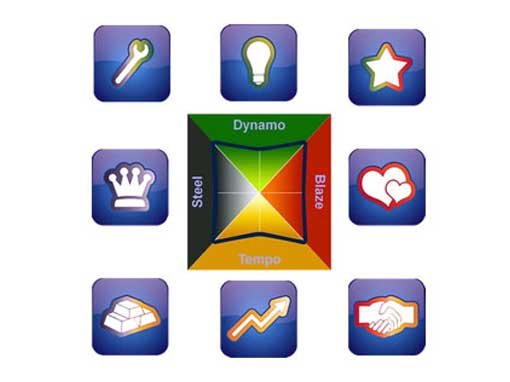
by Julia Felton | Feb 4, 2013
There are many types of leaders in any organisation and often the best leader is the one best suited for the job at hand. Now you know all about the eight different Talent Dynamics profiles you can then chose the leader suited for that job.
 Creators
Creators
Don’t expect a Creator to be the best people-person or a data-driven analyst. Creators lead best by setting the vision, a high standard to reach for and being task focused to reach their goals. To be in flow and avoid inevitable friction, a Creator needs a strong communicator to lead the team and a strong analyst to manage the numbers, or both the
people and the profit will suffer.
 Stars
Stars
Don’t expect a Star to wait for their team, or delight in the details (unless it is details on presentation and people). Stars strive for high standards and will often switch things at last moment to suit the occasion. Their leadership is by inspiration and leading from the front, so they need a strong Deal Maker to secure the connections and a strong number cruncher to count the dollars.
 Supporters
Supporters
Despite being one step away from the Star profile, the two are as different as thunder and lightning. Supporter profiles engender plenty of loyalty wherever they go, one of the Star profile’s greatest challenges. This is because while Stars generate hands-off admiration, Supporters attract hands-on motivation. Supporters are both intuitive and sensory which means that they can often act as the antenna for a more removed profile, leading by being the implementer from vision to action, through people.
 Deal Makers
Deal Makers
Deal Makers are ‘people people’ but they are more private than a Star and prefer to work one-to-one. Don’t expect Deal Makers to stick to a plan and expect them to come back from a meeting with a very different outcome than expected but a much better one. Deal Makers lead best when they are able to be in constant conversation with their ear to the ground, not isolated from the crowd or stuck in the back office.
 Traders
Traders
Traders struggle when given a blank sheet to fill but will quickly find the patterns in a puzzle. They find their flow when they grow a connection with their market and with their team. When they are taken out of this connection, it takes them time to tune back in and find their rhythm again. Traders lead far better through daily activity than long-term milestones and where they have ongoing input to inform their decision-making. All great Trader leaders lead from the middle of the action, which is the opposite of Creators, who do their best work when above the noise of the markets.
 Accumulators
Accumulators
Their analytical skills and sense of timing make Accumulators excellent project managers who will find the way to deliver what is needed on time. This ability to be extremely reliable has led many Accumulators up the ranks in areas that are not their passion. Many end up being faced with office politics, which they have little interest in and are ill equipped to handle. Accumulators lead best when they have the power to choose their team, as they will ensure that they only choose those reliable enough to get the job done.
 Lords
Lords
Lords are great at finding inefficiencies because they analyse the detail and stay in fanatical control. While this works for hard assets, it doesn’t work so well with people. For this reason, Lords are best at leading through the numbers instead of through conversation and collaboration. Lords almost always value process and policy over people, so take care in their position within a team and set them up for success using their strengths.
 Mechanics
Mechanics
Mechanics like to take things apart and put them together again. They are up to the challenge of changing the wheels on a moving car and as a result they are continually challenging the status quo on the way things are done. This can be very stimulating for some and very frustrating for others. Mechanics lead best by staying out of the fray and seeking ways to perfect a process or system and then have a team implement with thorough training.
Discover your leadership style by taking your Talent Dynamics Profile Test

by Julia Felton | Jan 4, 2013
In the same way that trust has five aspects, flow also has five aspects. While we may trust a team member to be great at analysing the details, we may still feel their contribution will slow down the process and so we will avoid getting them involved.
Our talent grows when we deliver more value in the area we are most trusted, and we accelerate flow by mastering our ability to leverage that value.
In Talent Dynamics, there are five aspects of flow and each of them comes more naturally to each of the five frequencies. Here are the five aspects of flow:
Initiative
This is the degree to which your team experience that you consistently contribute your ideas and plans for improvement effectively such that they add to the success of the company. Dynamo frequency profiles naturally contribute the greatest flow in this area.
Respect
This is the degree to which your team experience that you consistently collect and share suggestions and feedback from customers and partners with the team for effective action, resolution and improvement. Blaze frequency profiles naturally contribute the greatest flow in this area.
Presence
This is the degree to which your team experience that you consistently invest the time to be present for the team, and to be proactive in seeking and finding solutions to improve the well being and harmony of the team. Tempo frequency profiles naturally contribute the greatest flow in this area.
Discipline
This is the degree to which your team experience that you consistently maintain a high level of caring and sharing in how you manage time, performance, measures and financial responsibility. Steel frequency profiles naturally contribute the greatest flow in this area.
Perseverance
This is the degree to which your team experience that you consistently work with the end in mind and find paths to success for the team and company without giving up. As each profile builds their awareness and mastery of their spirit frequency, they will contribute at increasingly higher levels in this area. This keeps the team in flow through every
season and the transitions between them.
The Talent Dynamics Barometer is a 360 degree review in which each team member receives feedback in each of these five factors of both trust and flow. From this, they gain visibility of the areas in which they can most rapidly grow sustainable value for the benefit of the team. The team as a whole also sees where they have the biggest gaps in trust and this will often inform them on the additions they need to make in the team to enable everyone to perform at a higher level.

by Julia Felton | Dec 12, 2012
Team dynamics is one of the overlooked parts of a business. Yet it affects so much of a how a business operates, from the individual in the team to the company as a collection of teams to the entire market place.
If a team is out of sync or out of flow, things happen slowly or at worst not at all, accuracy levels decrease, absence increases, motivation is lacking and an unhealthy degree of competitiveness enters the workplace. The team members fail to trust one another. The team fails to work effectively. The business suffers. Does this problem sound familiar?
When looking at a business you need to identify areas where value and trust is lacking and how team work is being blocked. Imagine a team that worked well together, could anticipate each other and could back each other up. A team fully ‘in flow’. What economic impact would that have on your business or organisation?
Every person has something of value they bring to the team, a strength or a talent. This needs to be harnessed and encouraged to bring value to the team and increase the level of trust.
Julia Felton is an accredited Talent Dynamics Consultant and can help you improve and manage performance in your enterprise.

by Julia Felton | Nov 28, 2012
A number of my clients always ask me what it feels like to be in flow and in this Ted video Mihaly Csikszentmihalyi explains that flow is the secret to happiness.
In summary when we are in flow the following occurs:
- Completely involved in what we are doing – focused and concentrating
- A sense of ecstasy – a sense of being outside everyday reality
- Greater inner clarity – knowing what needs to be done, and knowing how well we are doing
- Knowing that the activity is doable – that are skills are adequate to the task
- A sense of serenity – no worries about oneself, and a feeling of growing beyond the boundaries of the ego
- Timelessness – thoroughly focused on the present, hours seem to pass by in minutes
- Intrinsic motivation – whatever produces flow becomes it’s own reward
You can access the TED video here at:
http://www.ted.com/talks/mihaly_csikszentmihalyi_on_flow.html
So do you know when you are in flow and what your path to success looks like?. Imagine how easy success is when you are in flow. In you would like to discover your flow profile take the test here.

